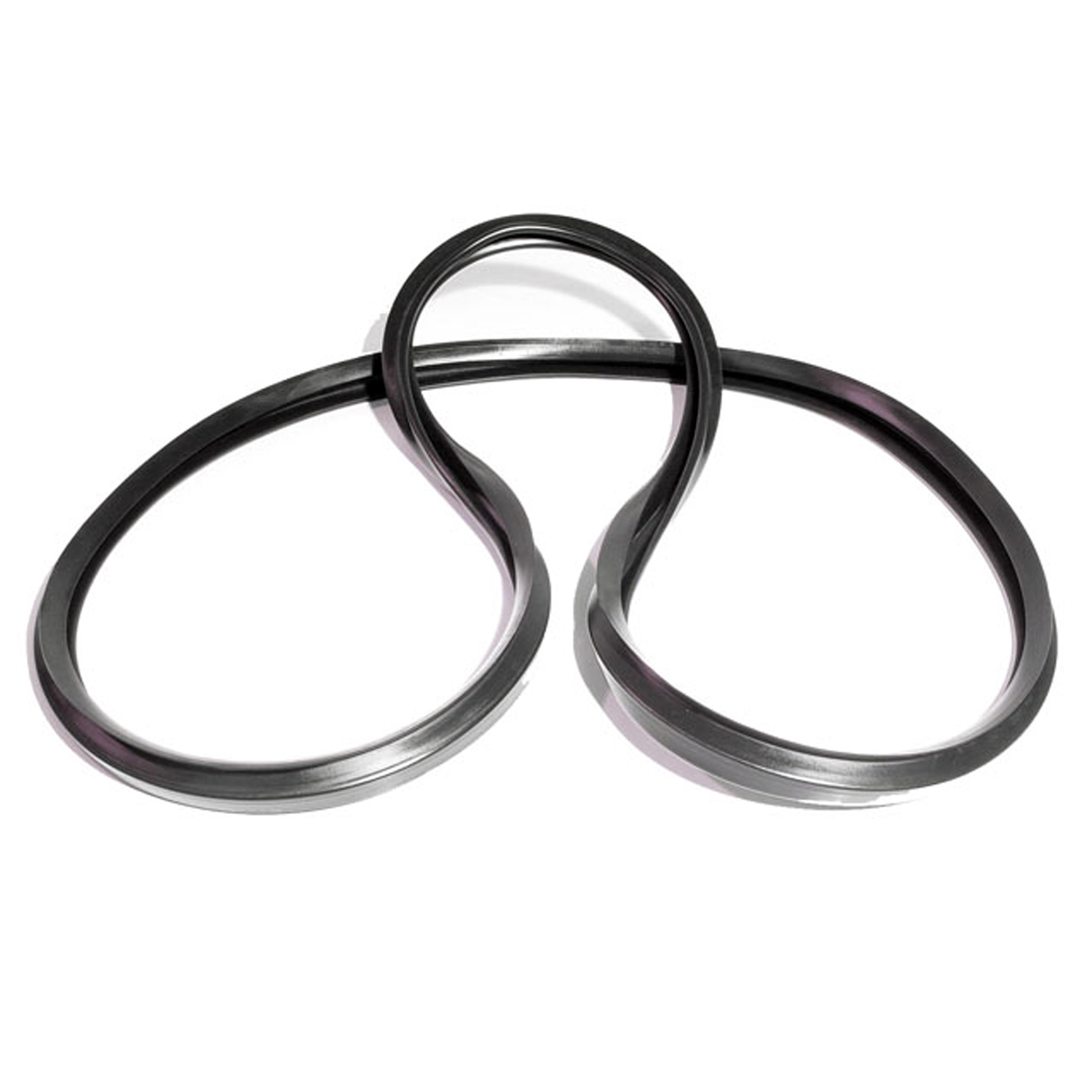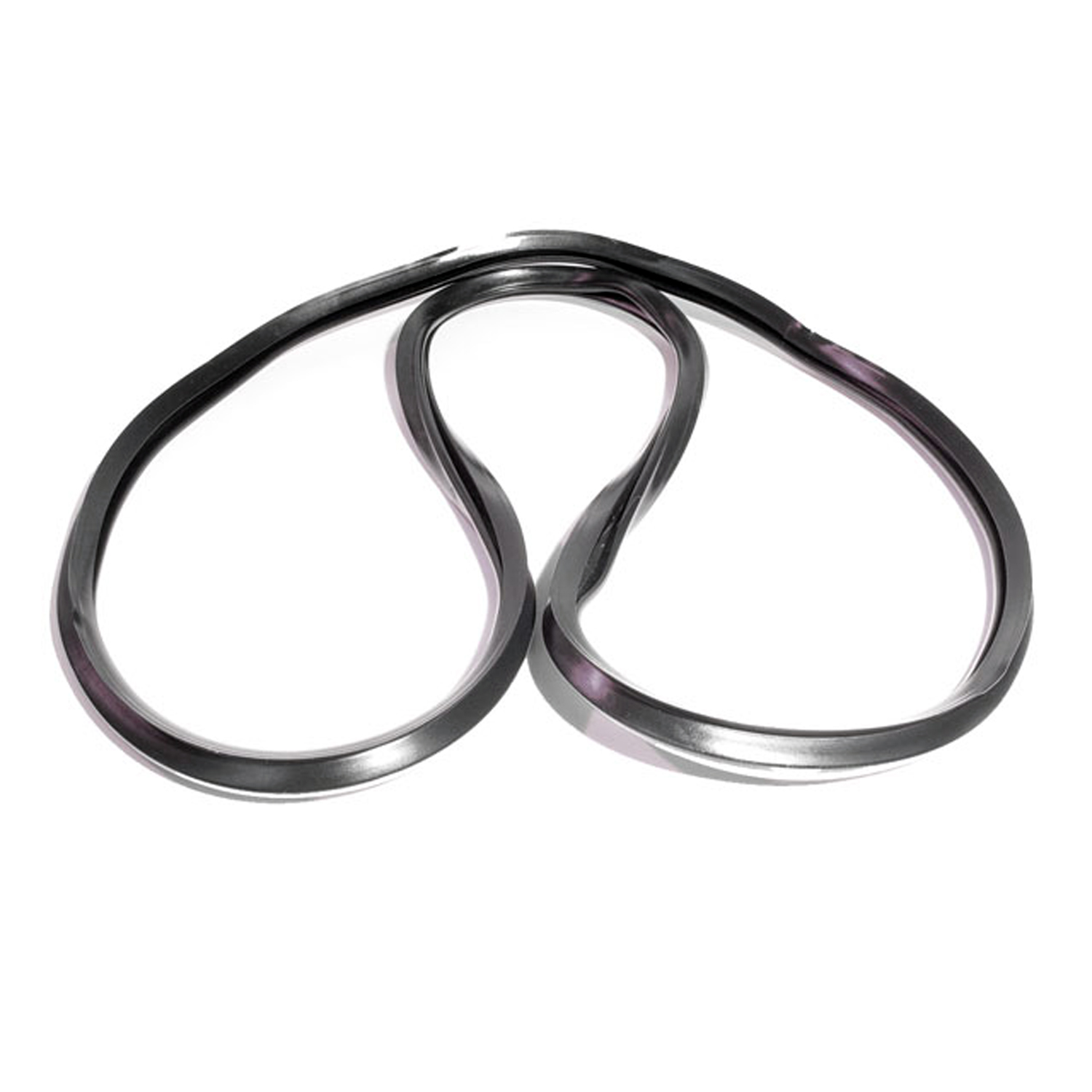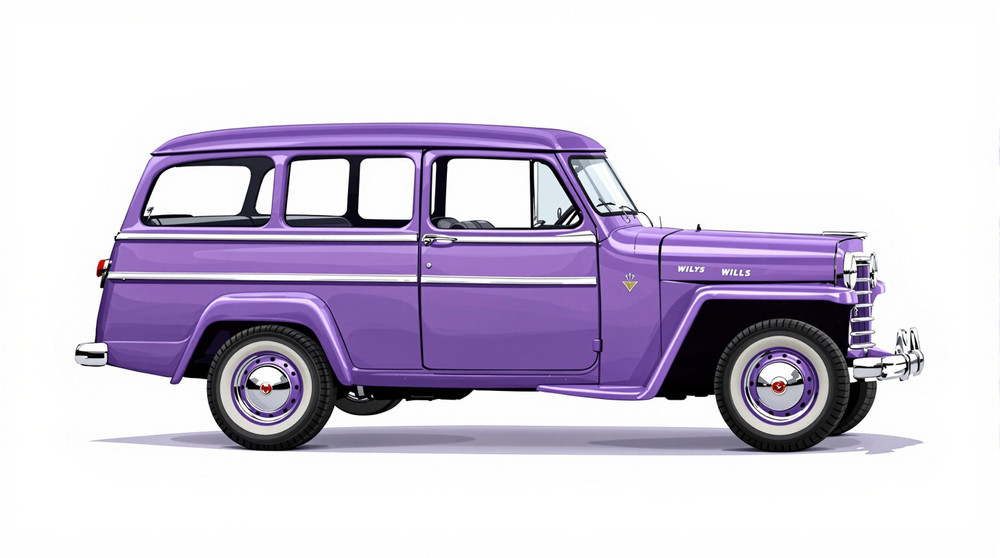Image of 1956 Willys Station Wagon, Note: These illustrations use artistic license and may differ from actual historical models.
Performance Metrics
Fundamental Metrics
Emotional Appeal
MMP Rating
| Engine Specifications | |
|---|---|
| Engine: | Super Hurricane 6 |
| Displacement: | 226 cu in (3.7 L) |
| Horsepower: | 105 hp |
| Torque: | 190 lb-ft |
| Compression Ratio: | 7.5:1 |
| Ignition System: | Battery Ignition |
| Cooling System: | Liquid-cooled |
| Performance Specifications | |
| 0-60 Time: | Estimated 20 seconds |
| 1/4 Mile Time: | Not available |
| Top Speed: | 75 mph |
| Transmission and Drive | |
| Drive Type: | 4WD |
| Transmission Type: | 3-speed manual |
| Fuel and Efficiency | |
| Fuel System Type: | Carburetor |
| MPG: | 15-20 mpg |
| Dimensions and Brakes | |
| Brakes: | Drum brakes |
| Wheelbase: | 104.5 in |
| Weight: | 3,200 lbs |
Note: Specifications for classic cars are given to the best of our ability, considering the limited and variant data available.
Introduction
The 1956 Willys Station Wagon is a testament to American ingenuity and a symbol of the post-war automotive boom. As one of the earliest sport utility vehicles, it bridged the gap between utilitarian workhorse and family car. Built by Willys-Overland Motors, a company known for its rugged military Jeeps during World War II, this station wagon was designed to offer versatility and durability. Its unique selling point was its all-steel body construction, which set it apart from the wood-bodied wagons of its era. The 1956 model holds a special place in history as it marks the transition towards more passenger comfort without sacrificing the toughness Willys vehicles were known for.
Design and Innovation
The exterior of the 1956 Willys Station Wagon boasted a classic, boxy silhouette that exuded a sense of adventure and practicality. Its flat panels and upright stance were complemented by distinctive, vertical grille bars that echoed its Jeep lineage. Inside, passengers were greeted with a no-nonsense interior where functionality reigned supreme. The materials used were robust and easy to clean, reflecting the vehicle's work-ready nature. Technologically, it featured innovations like independent front suspension and four-wheel drive options, which were quite advanced for a family wagon at the time. Color options ranged from conservative hues to two-tone paint jobs that added flair to its utilitarian roots. The most iconic body style was undoubtedly the four-door variant, which offered ample space for both passengers and cargo.
Historical Significance
The 1956 Willys Station Wagon was pivotal in paving the way for modern SUVs. It combined passenger car comfort with off-road capability, an idea that was revolutionary at the time. This vehicle stood out from others by offering families a car that could handle both daily chores and weekend escapades with ease. Its legacy can be seen in how today's SUVs have become the vehicle of choice for many drivers around the world.
Performance and Handling
Underneath its utilitarian exterior lay an engine capable of delivering reliable performance. While not built for speed, with top speeds hovering around 65 mph, it provided sufficient power for everyday tasks and light off-roading adventures. Acceleration figures were modest; reaching 60 mph from standstill took considerable patience compared to modern standards. On rough terrain or winding roads, however, the Willys Station Wagon showcased its strengths with sturdy handling and a reassuring sense of stability. Drivers often praised the visceral connection they felt with the vehicle – from the throaty hum of its engine to the solid feedback through its steering wheel.
Ownership Experience
The 1956 Willys Station Wagon found its niche among those who needed a multipurpose vehicle – equally at home on farm roads as it was in suburban neighborhoods. Maintenance was straightforward due to its simple mechanical design, making it accessible for owners to perform repairs themselves. Reliability was one of its strong suits as long as regular upkeep was observed.
Fun Facts
This classic wagon has had its share of limelight with appearances in period films and television shows, often symbolizing rugged American lifestyle. While not known for breaking speed records, it did set standards for multi-use vehicles. Criticisms typically focused on its modest power output and utilitarian comfort levels – aspects that some saw as charmingly characteristic of the era.
Collector's Information
Today, the 1956 Willys Station Wagon is a cherished collectible among classic car enthusiasts. Production numbers were not as high as some contemporaries, making surviving models relatively rare finds. As such, values can vary significantly based on condition, originality, and historical significance – with well-preserved examples fetching anywhere from $15,000 to $40,000 or more at auction or private sale.
Conclusion
The 1956 Willys Station Wagon stands as an enduring icon that captured America's post-war optimism and adventurous spirit. It remains a beloved piece of automotive history that continues to captivate collectors and vintage car aficionados alike.
1956 Willys Station Wagon Catalog of Parts
 1956 Willys Station Wagon Vulcanized Side Front-Rear Sliding Window Seal-VQT 9600Vulcanized Side Front-Rear Sliding Window Seal. Made into one piece for easy installation. Order 2 to do both sides. Replaces OEM #671419. Each
1956 Willys Station Wagon Vulcanized Side Front-Rear Sliding Window Seal-VQT 9600Vulcanized Side Front-Rear Sliding Window Seal. Made into one piece for easy installation. Order 2 to do both sides. Replaces OEM #671419. Each 1956 Willys Station Wagon Vulcanized Side Rear-Rear Sliding Window Seal-VQT 9601Vulcanized Side Rear-Rear Sliding Window Seal. Made into one piece for easy installation. Order 2 to do both sides. Replaces OEM #664257. Each
1956 Willys Station Wagon Vulcanized Side Rear-Rear Sliding Window Seal-VQT 9601Vulcanized Side Rear-Rear Sliding Window Seal. Made into one piece for easy installation. Order 2 to do both sides. Replaces OEM #664257. EachWhy Choose Metro?
For over 100 years, Metro Moulded Parts has been the pinnacle of quality in classic car restoration parts. Our commitment to precision and authenticity in every component ensures a perfect fit and an OEM-level appearance.
- Expert Craftsmanship & Quality: Each part is a testament to our dedication to reliability and perfection, crafted from original designs and thoroughly tested.
- Advanced Technology: We use cutting-edge techniques to create flawless, long-lasting parts that surpass others in performance.
- SuperSoft Sponge – The Ultimate Door Seal: Not only are our door seals 30% softer than competitors', but they're also guaranteed to never leak. They effectively reduce wind and road noise, enhancing your classic car's comfort and driving experience.
- Proudly American: Our parts are a product of American craftsmanship, made in the USA with a spirit of excellence and heritage.
- Unrivaled Warranty: We back our products with a 30-year industry-leading warranty, a testament to our confidence in their quality.
Join us in preserving the legacy of classic cars with parts that are crafted for perfection, not just made.

